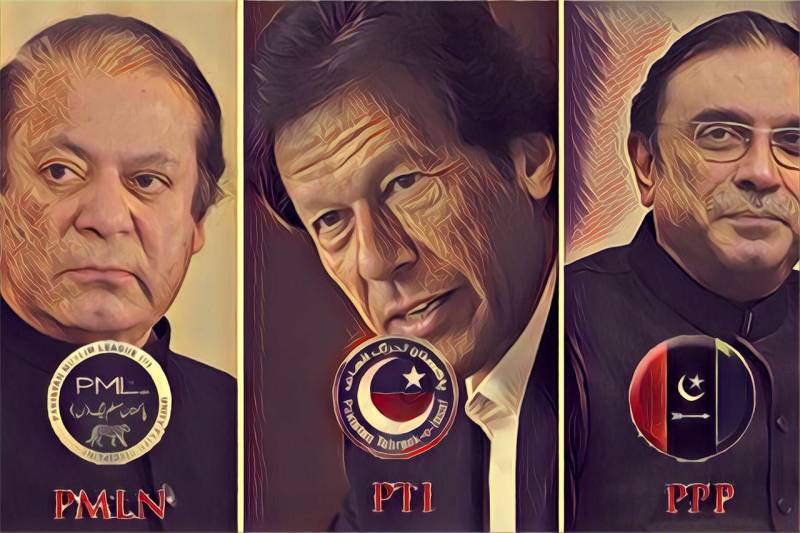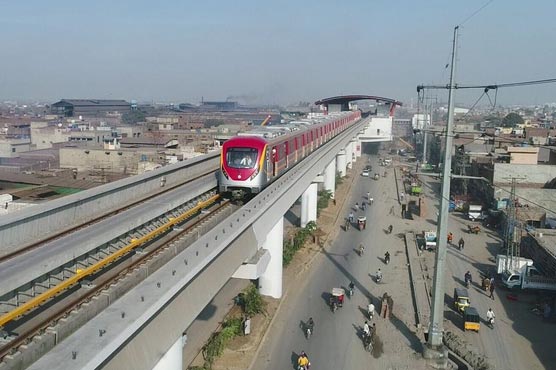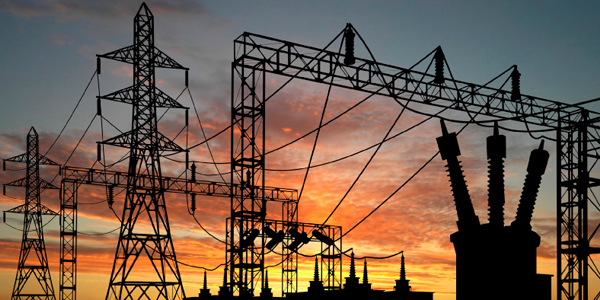
COMPARISON OF PPP & PTI: TRADE
 PPP
PPP • TAPI and CASA 1000 part of trans-arterial energy projects.
• Historic trade agreement with Afghanistan.
• Conduit factor of Wakhan corridor for movement of trade, water and hydrocarbon pipelines, to develop road connecting Gwadar and Chahbahar to bolster BRI.
• PPP successfully played its role in Historic WTO endorsed deal for preferential market access for Pakistani exports to EU.
PPP's plan:
• Steps for rehabilitation and proper supply of electricity to industries for eg textile and garments sector to sustain high levels of productivity. As per current ratio, a mere 15% employment in the manufacturing means a robust and dynamic industrial sector cannot grow. Hence, diversification (promoted through measures of niche markets, provision of credit facilities and subsidies) is essential to shift from consumer goods to higher share of industrial value-added of intermediate and value-added goods industry. Pakistan's exports have decreased from Rs20.7 billion to Rs19 billion from 2013 due to dismal performance in exports.
Short term measures:
Eliminating rebates and refund system through zero-rating.
Long term:
• Broaden textile export base.
• Intervention through incentives to promote non-traditional and high value added exports.
• Reduce import bill through extension of trade relations regionally.
• Review all free trade agreements.
PTI promise:
• 70% exports come from three types of products (textile, rice & leather).
PTI's endeavor:
• Establish pilot SME incubators.
• Launch 10-year incentive plan to transform export processing zones.
• Ensure 100% zero rating of export oriented sectors.
• Install mechanism for faster refunds on income & sales tax.
• Encourage higher value added exports in agriculture, garments and other sectors.
• Facilitate manufacturing inputs to be imported at lower tariffs and introduce cascading tariffs on raw materials, intermediates and to move towards production towards value-added exports.
• PTI emphasizes on textile sector.
• Foremost priority: energy costs should be competitive as sector is burdened with ailing infrastructure (establish internationally accredited labs for product testing and improving quality).
• Low cotton production (increase through better inputs & research and right prices).
• Blocked tax refunds (ensure release).
• Artificial foreign exchange rate (Lobby for GSP+ status on basis of regulatory basis) and poor quality human capital (strengthen allied industries for economically viable inputs).
COMPARISON OF PML-N & PTI: TRANSPORT AND TOURISM
 PML-N Performance:
PML-N Performance:• Pakistan Railways back on track (Net Revenue increase: 32%, improved net functional locomotive availability at 40%).
• Improved road infrastructure (launched 1360B rupees program to construct new networks of motorways/created 8044KMs farm to market roads in Punjab/Constructed 7500KMs, widened 11000KMs and rehabilitated 14000KMs of roads in Punjab).
• Created world class urban transport (Metro Bus, Orange Train and feeder bus, funded Green line project in Karachi).
• Computerized system (digitized bus terminals in Punjab) and strengthened aviation (making of new and upgradation of existing airports.
• Increased aircraft movements and traffic) and maritime (Gwadar, Port Qasim, Karachi port).
PML-N promises:
• Create world class National Tourism Digital Directory and establish National Tourism Authourity.
• Infrastructure Scaling: developing tourism resources in Northern/coastal regions.
• Developing international standard infrastructure to promote culture of visiting local tourist, heritage and religious sites.
• 'Rebrand Pakistan' initiative to improve Pakistan's ranking indices.
• Encourage world to visit Pakistan through high profile international campaigns and capitalizing CPEC opportunities. During 2013-18, there was an increased inflow as 1.75M tourists visited Pakistan and domestic tourism surged to 38.3 Million.
PTI
• PTI will promote Pakistan as 'Asia's Best kept Secret' in global tourism market.
• Develop new tourist destinations in 5 years, eliminate NOC condition, support TVET curriculum.
• Institute development to upgrade human skill in hospitality.
• Implement framework to incentivize private sector investments in upgradation and development of new facilities to encourage 'themed tourism’ i.e. eco-tourism.
COMPARISON OF PTI, PML-N AND PPP: ENERGY
 PML-N
PML-N• Generation and transmission of 20700MW (2018).
• Addition: 11000MW (LNG:6800 COAL:2650, RENEWABLE:1500, NUCLEAR&HYDRO:600).
• Lowest cost power through replacement of 2100MW (decreased generation costs); ensured through transition to cheaper fuel sources (LNG, Coal, hydro) and linking feeder level losses to reduce theft and power cost.
• 'Roshan Pakistan' program: System-wide efficiency improved as a result of these efforts.
• Furthermore, transmission and distribution choke points improved by investing in infrastructure.
• PML-N plan of 'power to the poor' seeks to provide electricity universally through on and off grid solutions.
• PML-N also successfully managed to reduce carbon print whereby increasing green energy share (wind, solar biogas) from 0.5% to 5%.
PTI & PPP
• PTI aims to solve circular debt through reducing transmission and theft losses.
• Implement plans to harness natural resources towards a greater energy mix by reducing (i) losses (ii) system inefficiencies (iii) management competence and (iv) power theft; all contributing to circular debt problem.
To meet Pakistan's energy challenge, PTI will:
• Shift away from rent-seeking models.
• Transition towards 'power-exchange,' allowing more efficient technologies to get precedence in dispatches.
• Continue support of expansion and utilization of indigenous coal.
• Revive oil and gas exploration.
PPP’s 4-point strategy:
• Diversification of energy mix
• Prioritizing efficiency and conservation
• Revamping transmission and distribution
• Rationalizing oil and gas policies.
Natural resources are considered as important source of development.
PPP
• Intends to benefit from Thar coal project experience further through innovative way of ensuring sense of local ownership for purpose of development of new resources.
• Work upon natural resources development: Formation of representative company, royalty and implementation of Article 173 which depicts PPP's endeavour to instill awareness and the means to ensure aim is achieved in terms of empowerment and poverty reduction.
PML-N
• Track record depicts energy gap reduced: new re-gasification terminals energized people out of poverty (2M domestic),
• Energized 3000 SME's - generating mass employment and increased competitiveness.
• Pervasive relief (2bdcf to 700mmcdf) through reliable transmission and distribution (Completed: 1681KM transmission & 19462KM distribution pipelines established 6500KM service infrastructure).
PML-N promises:
• Provision of energy coupons and reducing unaccounted for Gas (UFG).
• Building Double transmission capacity through South-North. Commercializing (Thar), resolving (RekoDiq), developing (Chiniot Iron) and exploring (shale potential).
COMPARISON OF PML-N & PPP: WATER
PML-N
• PML-N developed national consensus on water resource management and developed first national policy.
• PML-N increased allocation of water sector from Rs 35 billion to Rs 80 billion during 2017-18.
• Four big dams constructed. 20 small dams built in Balochistan.
• Extended water supply to 7.2 million citizens through new connections in 1075 villages.
• Provision of safe drinking water: 15 million additional citizens in 5 cities; installing 1216KM of new water pipelines; replacing 1625KM worn out pipelines.
• 682 new tube wells in remote areas, revitalization of 1574 dysfunctional rural water schemes.
• To enhance water quality, 2428 water filtration plants installed for 6 million citizens.
• Rs 6 billion were invested in new water treatment plants, effecting 3 million citizens.
• Increased water financing was achieved through joint investments on water related issues (federal provided funds of Rs200 million to provincial governments).
PPP
PPP developed 4 point strategy
• Efficiency and conservation: use of effective & reliable irrigation systems to address problem of water wastage and contamination. Sindh Water sector improvement Project and lining of Rohri and Jamrao canals and 100 distributaries are key examples. Guddu and Sukkur Barrages have increased storage through modernization and rehabilitation. Drip and sprinkler method as efficient irrigation system was utilized to collect, store and use rainwater for irrigation. 40% of Karachi's sewage will be treated as new sewage treatment plant is being setup.
• Augmenting supply by investing in new technologies: expand water accessibility to domestic users and invest in seawater desalination project to reduce supply shortages.
• Improving water quality management: following best international practices.
• Addressing water-logging and salinity: installed 3027 tube wells over 450,000 acres.
